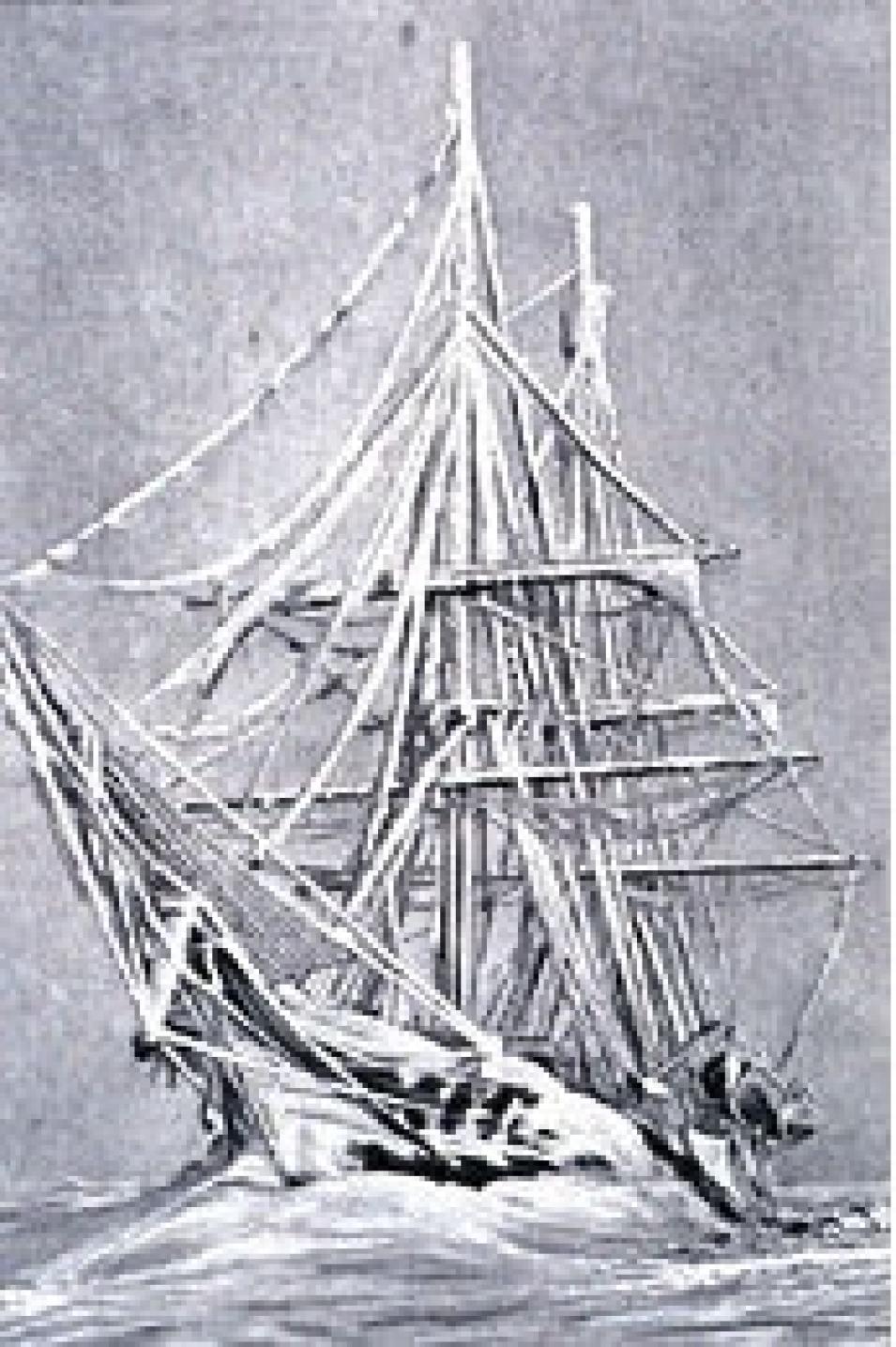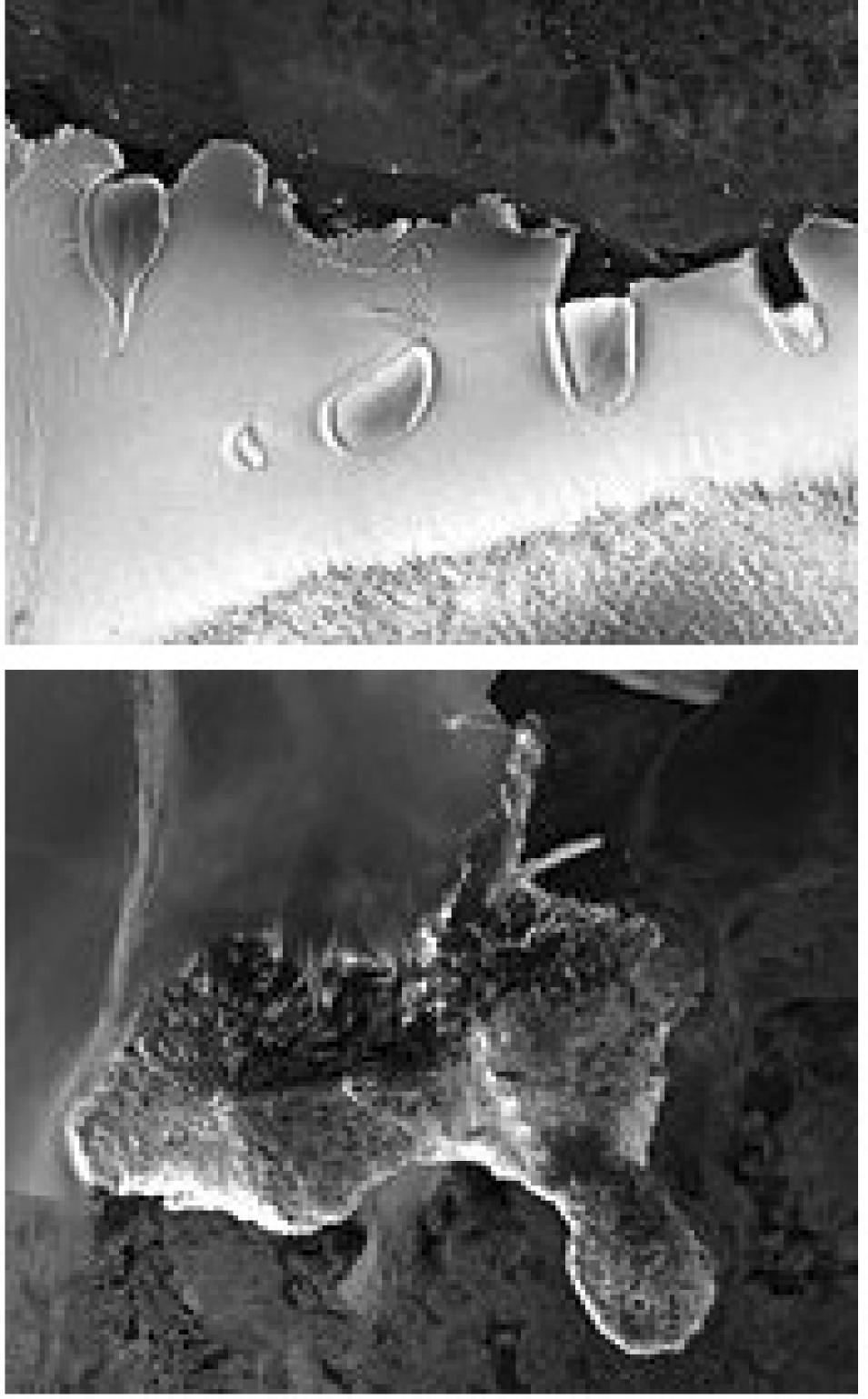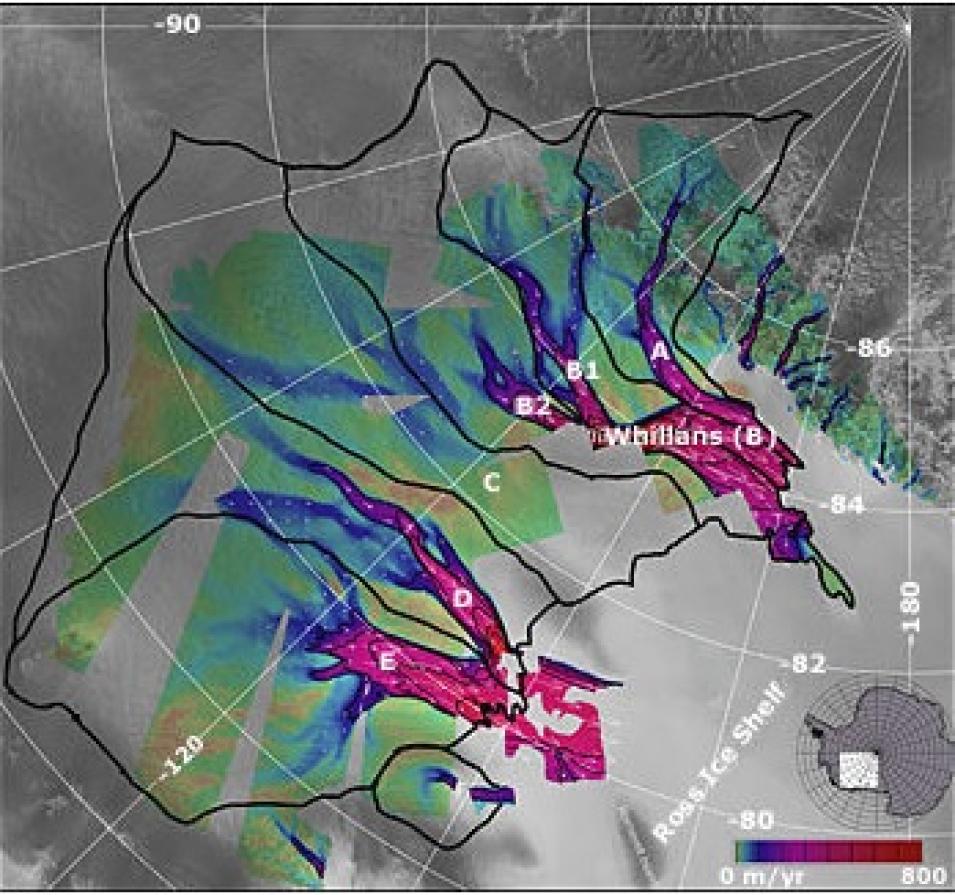But data from recent NASA satellite missions offer scientists new views of Antarctica, and new opportunities to understand how its enormous ice sheet might respond to future climate change. In 1997, exactly a century after the Belgica set sail, the Canadian satellite RADARSAT-1 orbited over Antarctica, collecting radar images of the entire continent in a spirit of international scientific cooperation similar to that of de Gerlache and his crew. In only 18 days, the Antarctic Mapping Mission (AMM-1) generated the first complete high-resolution radar map of Antarctica, giving scientists a first glimpse of the entire Antarctic ice sheet.
“The wonderful thing about radar and other satellite observations is that they provide continental-scale context at extremely high resolution, which is really unprecedented,” said Ken Jezek, Professor at the Ohio State University’s Byrd Polar Research Center. Scientists like Jezek further capitalized on RADARSAT-1’s capabilities with the Modified Antarctic Mapping Mission (MAMM) in 2000, a follow-up to AMM-1. Like AMM-1, MAMM was a collaboration between NASA and the Canadian Space Agency (CSA), with help from NASA's Alaska Satellite Facility Distributed Active Archive Center (ASF DAAC), NASA’s Jet Propulsion Laboratory (JPL), NASA's Goddard Space Flight Center, the Ohio State University, and Vexcel Corporation.
MAMM had two ambitious goals: First, the mission generated high-resolution images of Antarctica’s perimeter, to be used for identifying changes in the Antarctic ice sheet since AMM-1 and earlier satellite missions. Second, unique interferometric radar data from MAMM allowed scientists to measure how fast Antarctica’s ice is flowing.
The highly publicized disintegration of the Larsen B Ice Shelf earlier this year provided startling evidence that Antarctica’s ice shelves might be undergoing unprecedented retreat. Ice shelves, massive floating sheets of ice that hug Antarctica’s coast, do not contribute directly to rising sea level when they melt, for the same reason that ice cubes melting into a glass of lemonade don’t raise the level of the drink. But the disintegration of an ice shelf might allow the internal ice sheet to flow faster into the ocean, no longer slowed by a mass of floating ice at its margin.
“What we don’t know yet, and what we hope MAMM will help us understand, is whether the elimination of coastal ice shelves has an impact on the interior ice sheet,” said Jezek. “If the interior ice sheet starts to slough off into the ocean, then sea level will definitely rise.” This could spell trouble for residents of low-lying regions like New Orleans and the Netherlands.
To predict how the ice sheet’s mass balance might change in the future, scientists must understand the current mass balance of the Antarctic ice sheet, along with the factors that influence it.
The mass balance of a glacier is a measure of its health, reflecting the balance between the amount of snow that accumulates on the glacier’s surface each year, and the amount of ice that melts or calves from its terminus. When a glacier accumulates more snow and ice than it discharges, it is said to have a positive mass balance, and it grows as it gains mass each year. In contrast, a glacier with a negative mass balance shrinks and, in turn, contributes to global sea level rise. Because it’s difficult to measure the mass balance of the giant ice sheets that cover Greenland and Antarctica, it is unclear whether they are getting smaller.
“Mass balance is very complicated, especially trying to predict future mass balance,” said Ian Joughin, a Senior Engineer at JPL. Joughin is using MAMM data and a recently developed technique called interferometry to estimate how fast Antarctica’s ice streams are transporting ice towards the sea. Interferometry uses extremely sensitive measurements of changes in distance between the satellite and points on the ground to calculate the velocity of slowly moving features on the Earth’s surface. “Believe it or not, we can measure ice movements of just a few centimeters over a 24-day period,” said Jezek.
Work by Jezek, Joughin, and colleagues has yielded some remarkable results. “Over the past five years, in part thanks to AMM-1 and MAMM, the idea of ice sheets being slow responders to climate change has been thrown out the window,” said Jezek.


